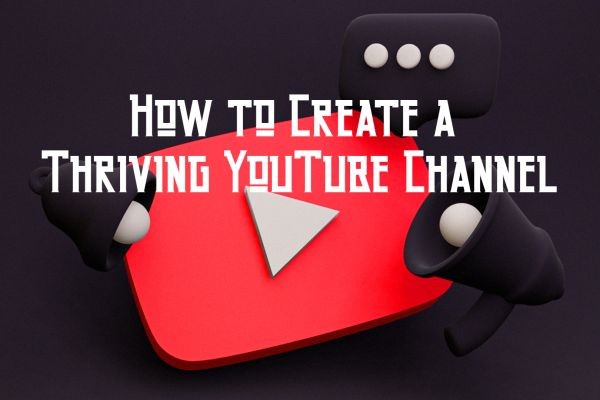In the ever-evolving landscape of the music industry, streaming has become the dominant form of music consumption. While this shift offers unprecedented access to global audiences, it also raises critical questions about profitability and sustainability for musicians, especially in Australia. This article delves deep into the earnings of Australian musicians from streaming platforms, providing data-backed insights and expert analysis to unravel the complexities behind this modern revenue stream.
The Streaming Landscape in Australia
Australia, with its vibrant music scene, has not been immune to the digital transformation sweeping the global music industry. As per the Australian Recording Industry Association (ARIA), streaming accounted for over 80% of the total music revenue in Australia in 2022. Despite this impressive statistic, the earnings of musicians from streaming remain a contentious subject.
How Streaming Works
Streaming platforms like Spotify, Apple Music, and YouTube operate on a model where revenue is generated primarily from subscriptions and advertisements. This revenue is then distributed to rights holders, including record labels, publishers, and artists, based on a pro-rata share of total streams. However, the distribution formula is complex, with several intermediaries taking a cut, leaving artists with a fraction of the total earnings.
Pros and Cons of Streaming for Musicians
Pros:
- Global Reach: Streaming platforms provide access to a global audience, enabling musicians to reach listeners far beyond their local markets.
- Data Analytics: Artists gain insights into their audience demographics and preferences, allowing for targeted marketing and tour planning.
- Discoverability: New talents can be discovered more easily, with the potential for viral success.
Cons:
- Low Per-Stream Payouts: Musicians often receive fractions of a cent per stream, necessitating millions of streams to earn a substantial income.
- Market Saturation: With millions of tracks available, standing out can be challenging for independent artists.
- Intermediaries: Labels and distributors often take a significant share, reducing the direct earnings of musicians.
Case Study: Tones and I - A Streaming Success Story
The Australian artist Tones and I, famous for her hit single "Dance Monkey," serves as a prime example of streaming success. The track amassed over 2 billion streams on Spotify alone, catapulting her to international fame. However, despite the staggering streaming numbers, the financial returns highlight the disparity between visibility and profitability.
According to industry estimates, Spotify pays between $0.003 and $0.005 per stream. Calculating with an average of $0.004 per stream, "Dance Monkey" would have generated approximately $8 million. However, after deductions by labels, management, and taxes, the net income for the artist can be significantly lower.
Regulatory Landscape and Economic Context
The Australian Competition & Consumer Commission (ACCC) has been scrutinizing the practices of streaming services, focusing on transparency and fair compensation for artists. Additionally, the Reserve Bank of Australia (RBA) reports that the broader economic climate, including inflation and consumer spending trends, influences disposable income available for music subscriptions, indirectly impacting streaming revenue.
With the Australian economy showing resilience post-pandemic, discretionary spending on entertainment, including music, is expected to rise. However, the Australian Bureau of Statistics (ABS) warns of potential economic headwinds that could alter consumer behavior, affecting streaming revenues.
Myths and Misconceptions About Streaming Earnings
Myth 1: Streaming Guarantees Financial Stability
Reality: While streaming can provide a steady income stream, it rarely matches earnings from traditional album sales, especially for emerging artists.
Myth 2: More Streams Always Mean More Money
Reality: The payout per stream varies significantly across platforms and is affected by contracts with labels and distributors.
Myth 3: Streaming Kills Physical Sales
Reality: Although digital formats dominate, vinyl and physical sales have seen a resurgence, catering to niche markets and collectors.
Future Trends and Predictions
As technology evolves, the music streaming landscape is poised for further transformation. By 2026, advancements in AI and machine learning could lead to more personalized listening experiences, potentially increasing user engagement and subscription rates. Moreover, blockchain technology may offer solutions for more transparent and equitable royalty distribution, a move that could benefit Australian musicians significantly.
Industry experts predict that integrating virtual reality (VR) and augmented reality (AR) with streaming services will provide immersive experiences, opening new revenue streams through virtual concerts and interactive fan engagement.
Conclusion: Navigating the Streaming Era
While streaming presents opportunities for exposure and growth, it also challenges musicians to navigate a complex ecosystem to achieve financial success. Australian musicians must leverage data analytics, diversify income streams through live performances and merchandise, and advocate for fairer compensation models.
To thrive in this digital age, artists and industry stakeholders must collaborate to create sustainable practices that balance artistic integrity with commercial viability. As the industry continues to evolve, staying informed and adaptable will be key to success.
People Also Ask (FAQ)
- How does streaming impact Australian musicians financially?Streaming provides exposure but often results in low per-stream earnings. Musicians need millions of streams to earn substantial income, making live performances and merchandise crucial for financial stability.
- What are the biggest misconceptions about streaming earnings?One common myth is that more streams always equate to more money. In reality, the payout per stream is affected by various factors, including platform rates and label contracts.
- What strategies can Australian musicians use to increase streaming revenue?Artists should focus on building a strong online presence, engaging with fans through social media, and exploring alternative income streams like exclusive content and virtual events.
Related Search Queries
- How much do musicians earn from Spotify in Australia?
- Streaming revenue vs. album sales Australia
- Impact of streaming on Australian music industry
- Best platforms for Australian musicians
- Future of music streaming in Australia
- Australian music streaming statistics 2023
- How do streaming services pay musicians?
- Challenges faced by Australian musicians
- Music streaming trends in Australia
- Australian musicians' income sources
As the industry continues to evolve, staying informed and adaptable will be key to success. We encourage our readers to share their experiences and insights on navigating the streaming landscape in the comments below. Join the conversation and explore how Australian musicians can thrive in the digital age.






























